
Learn how to make homemade pasta with the perfect ratio and easy to follow step by step instructions! With just 3 ingredients, you are on your way to making pasta from scratch with or without a pasta maker.

Making homemade pasta is definitely a labor of love. It takes time to mix, rest, roll, and cut the fresh pasta dough and it can be hard work. Making your own pasta is a fun activity and the taste is nothing like dried store-bought pasta.
You can easily make homemade pasta dough following a simple ratio and using just a few simple ingredients to make a variety of pasta recipes. Use your homemade dough to make fresh pasta for cacio e pepe, carbonara or to serve with mussels marinara.
Jump to:
🥚Ingredient notes

- Flour - I prefer using 00 flour to make fresh homemade pasta. It is a fine ground Italian flour that is perfect for making homemade pizza dough or homemade pasta. Semolina flour is another popular flour that is used for pasta dough. It is a course ground flour with a nuttier tasty and yellow color. 00 flour is great for soft, pillowy pasta. For a heartier pasta that will stick better to sauce, you can use a 50/50 mix of semolina and 00 flour or all semolina. These are sometimes more expensive and harder to find, so all-purpose flour will work as well.
- Eggs - Bring your eggs to room temperature if you can before making the pasta. This helps them mix into the dough easier.
🍝 Egg to flour ratio for homemade pasta
The standard egg to flour ratio for basic pasta dough is 2 ounces of egg (1 large egg) + 3 ounces of flour (approximately ⅔ cups). This is a perfect serving for 1 person.
Weighing your eggs and flour using a kitchen scale will yield the perfect pasta dough. In my personal experience, sometimes a large egg doesn't always weigh 2 ounces and how you scoop the flour can also vary the amount of flour used.
Weighing the ingredients gives you the most accurate measurements to create the perfect dough. Simply weigh the eggs, using one egg per serving needed, then times that number by 1.5 to find how much flour you should use.
🥣 Step by step instructions
After measuring, pour the flour onto a clean work surface and create a well in the center of the flour. Pour the cracked eggs into the well and then add the salt. Using a fork or small whisk, break up the eggs and mix them with the salt until well scrambled.

Continue to whisk the eggs while slowly incorporating the flour into the egg mixture. When the mixture is too sticky or thick to keep whisking, start to fold the remaining flour onto the eggs, kneading it into a dough.
Once all of the flour is incorporated, knead the pasta dough for 2-3 minutes until it is smooth and elastic. Wrap the dough tightly in plastic wrap and allow it to rest on the counter for 30 minutes.
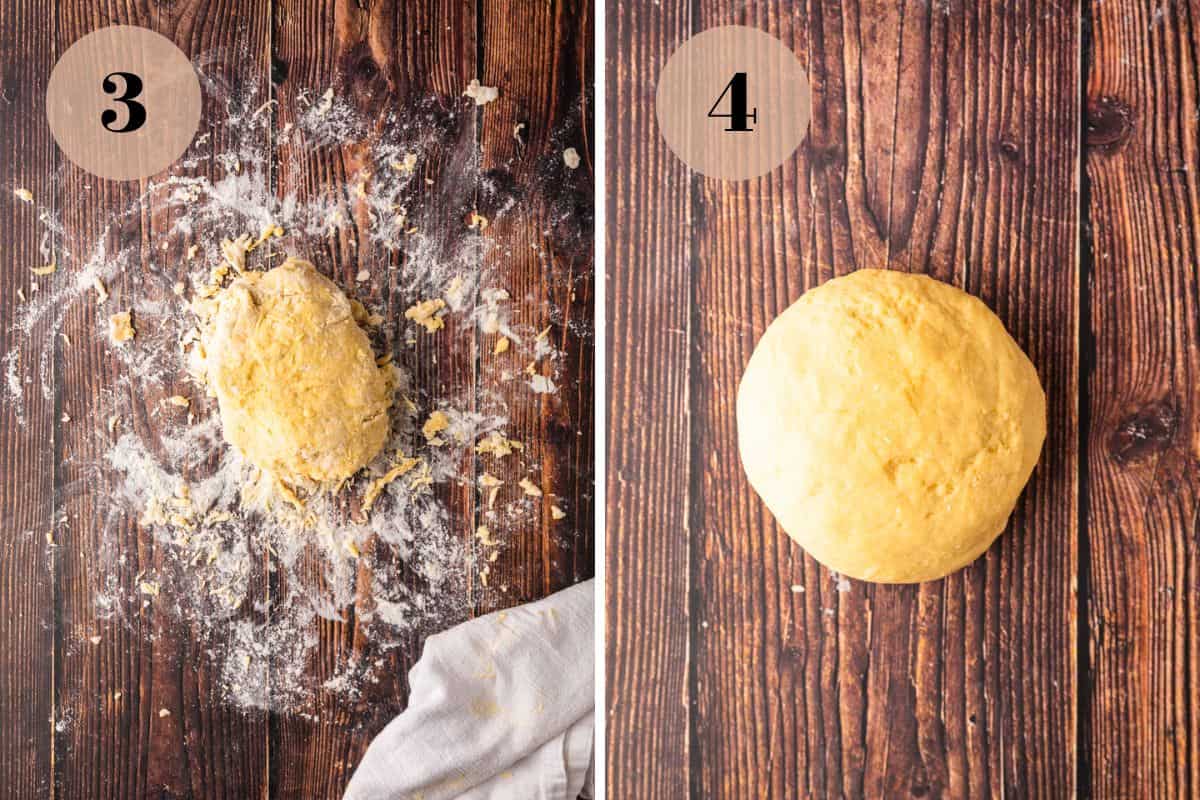
After the dough has had time to rest, cut the dough ball into smaller pieces and then roll it out on a floured surface thinly using a rolling pin or using a pasta machine. Cut pasta into the desired shape and allow to dry on a pasta rack or cook fresh pasta immediately.

If you ever don't recognize a tool or skill that is mentioned, be sure to look it up in our Glossary of Cooking Terms and Definitions for more information.
⭐ Expert tips
- Mix the eggs into the flour slowly so you don't have big clumps of flour.
- If the dough is too dry, a little water or olive oil can help to moisten the dough. Add a little flour if the dough is too wet. It should not stick to your hands, the counter, the rolling pin, the pasta machine, or the cutter.
- Letting the pasta dough rest allows the pasta to continue to hydrate and the gluten to relax so the pasta is easier to roll out.
- Use plenty of flour when rolling and cutting pasta dough so it doesn't stick together.
- To make sure the noodles don't clump together during cooking, you can dry pasta on a rack or in a single layer on a well-floured towel. This isn't necessary but does help. If you don't dry your pasta on a rack, make sure the noodles are well-floured and placed in small nests on a floured baking sheet or towel. If you just place all of the cut noodles in a large pile, they will most likely stick together and you will have to start all over.
- Fresh pasta cooks very quickly in just 3-5 minutes so keep a close eye on it so it doesn't overcook and become mushy.
- Always cook pasta until al dente in a large pot of boiling salted water and then drain and toss with your favorite sauce.
🍝 Alternative methods for making pasta
Instead of mixing by hand, this dough can be mixed together in a food processor. Simply add all of the ingredients to a food processor and pulse to combine. Continue to mix until the dough has completely come together. You still may need to knead the dough by hand for a minute to make sure you have the right consistency.
This homemade pasta recipe can be rolled out by hand using a rolling pin and then cut it using a sharp knife or pastry or pizza cutter. You can also use a pasta machine to roll and cut the pasta, this is a bit faster. A pasta roller attachment as well as different cutting attachments can be used with a Kitchenaid mixer as well. This makes it super quick and probably takes the least amount of effort.
⏲️ Make ahead and storage instructions
Making your own fresh pasta is great to do ahead of time. Make and store this fresh pasta recipe and wrap in plastic wrap. Store in the refrigerator for up to 2 days. Double or triple the recipe and store in a zip-top bag or airtight container in the freezer for up to 3 months.
Defrost frozen pasta dough in the refrigerator completely. Let it sit at room temperature for at least 30 minutes before rolling and cutting.
🍝 Pasta sauce recipes
If you loved learning how to make homemade pasta, check out these delicious sauces that you can toss with your fresh homemade noodles!
📖 Recipe

How to Make Homemade Pasta
Ingredients
- 8 ounces whole eggs approximately 4 large
- 12 ounces 00 flour approximately 2 ⅔ cup
- ¼ teaspoon fine sea salt
Instructions
- Pour flour onto a clean work surface in a pile and then create a well in the center of the pile of flour.
- Pour eggs into the middle of the well of the flour and add the salt on top of the eggs.
- Using a fork or a small whisk, break up the eggs and scramble them with the salt.
- Continue to mix the eggs, incorporating the flour a little bit at a time.
- When the mixture is too thick or sticky to mix, fold the flour on top of the eggs and knead the dough until all of the flour is incorporated.
- Knead the dough for 2-3 minutes until smooth and elastic and then wrap it tightly in plastic wrap.
- Let the dough rest at room temperature for 30 minutes or for up the 24 hours in the refrigerator.
- Use a pasta machine or rolling pin to roll the dough out thinly. Cut fresh pasta into the desired shapes.
- Cut pasta can be dried for a bit on a pasta rack or on a floured towel in a single layer or it can be cooked immediately. If cooking the pasta immediately, make sure the cut pasta is well-floured and set in nests or small piles so it doesn’t stick.
- Pasta can be cooked in a large pot of boiling salted water until al dente. Drain and serve with your favorite sauce.
Video
Notes
- If the dough is too dry, a little water or olive oil can help to moisten the dough.
- If the dough is too wet, a little flour can be added. It should not stick to hands, the counter, the rolling pin, the pasta machine, or the cutter.
- Letting the pasta dough rest allows the pasta to continue to hydrate and the gluten to relax so the pasta is easier to roll out.
- Use plenty of flour when rolling and cutting pasta dough so it doesn't stick together.

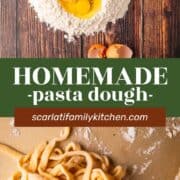
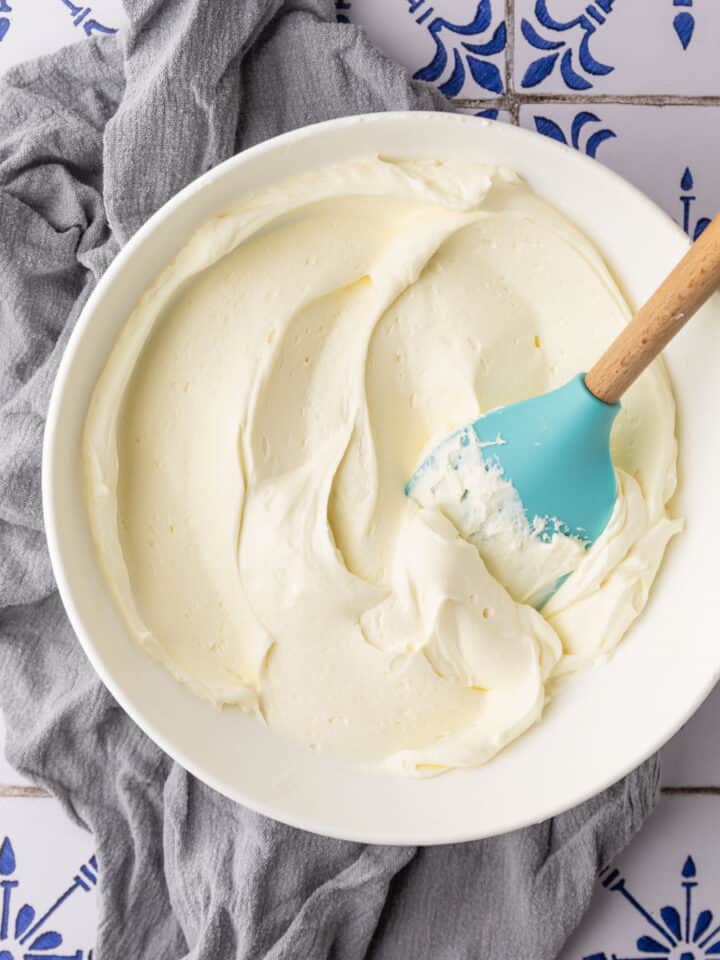
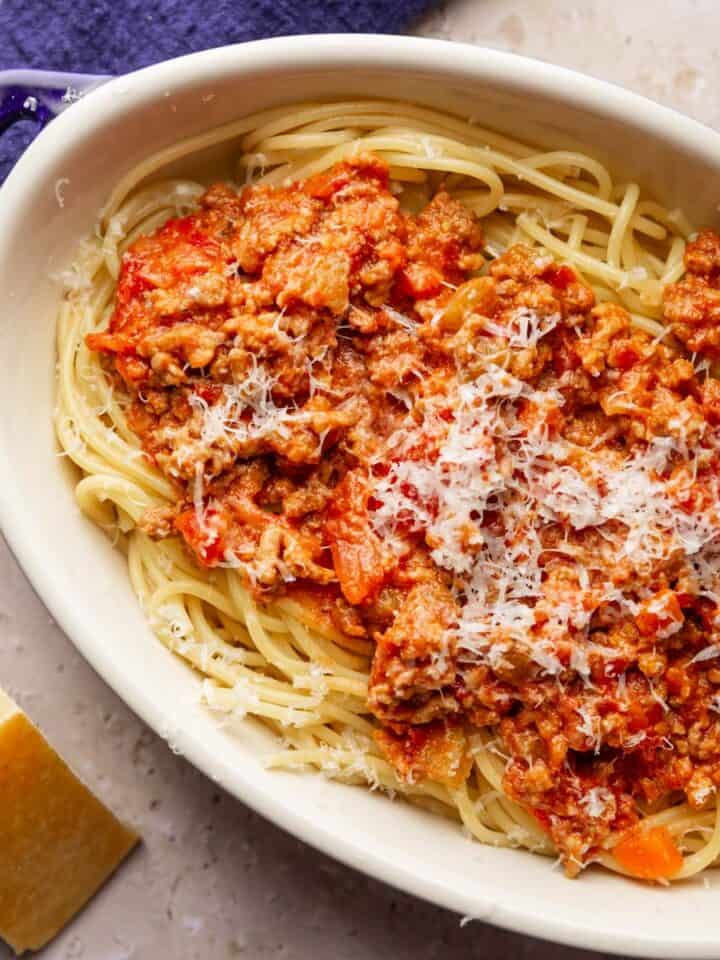
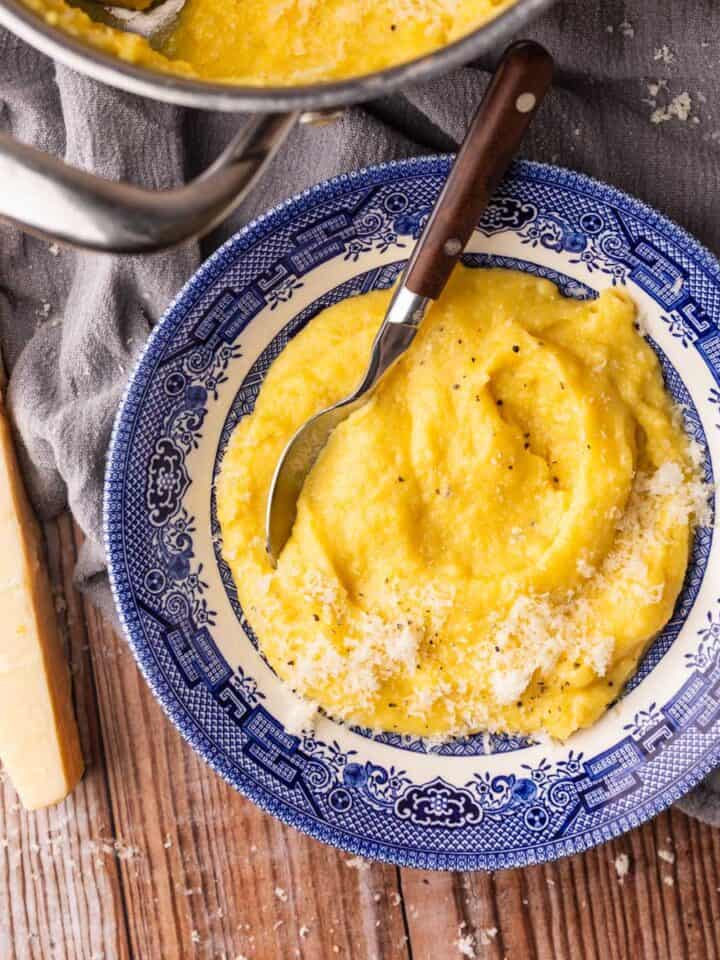
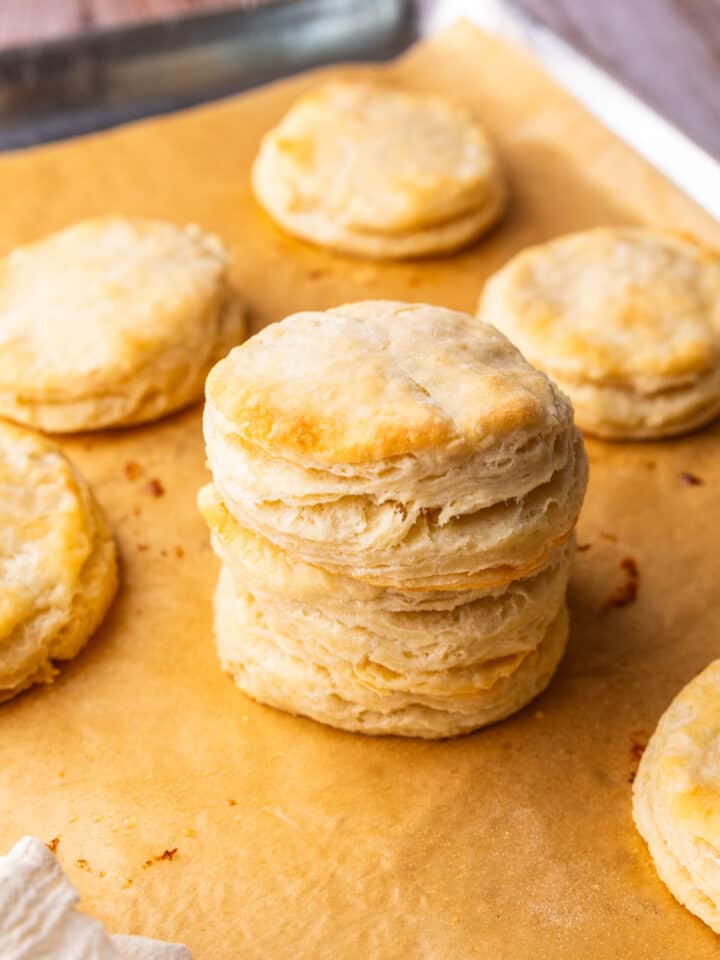
Comments
No Comments